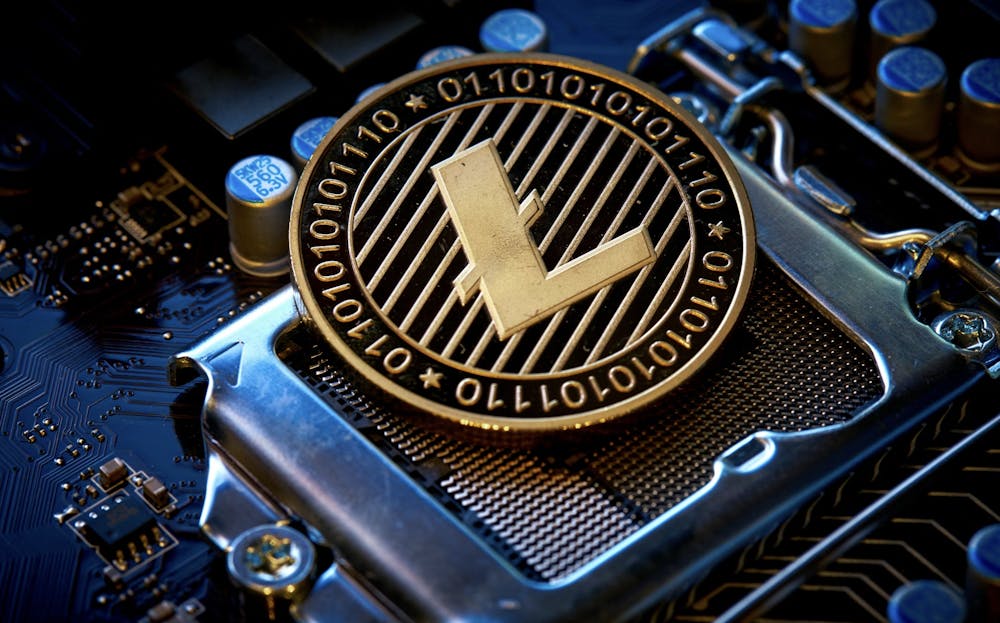Photo by Michael Förtsch on Unsplash
The Origins of Litecoin
Created by Charlie Lee in 2011 as a lighter and faster alternative to Bitcoin, Litecoin is often referred to as the "silver" to Bitcoin's “gold.” While Bitcoin was designed as a store of value, Litecoin sought to provide faster transaction times and lower fees, making it more suitable for day-to-day use. Over the years, it has gained a significant following and established itself as one of the top cryptocurrencies, solidifying its place as a reliable and widely accepted digital asset.
Why Investors Seek Litecoin Price Predictions
For both seasoned investors and newcomers, predicting Litecoin’s price is a crucial part of crafting effective investment strategies. Websites like Coindataflow are valuable resources for individuals looking to stay informed about price trends and potential future movements. Coindataflow provides detailed analytics to predict where Litecoin’s price may go in the future. Understanding these predictions helps investors make informed decisions, particularly in the volatile crypto market.
Litecoin’s Technology: Faster, Cheaper, and More Scalable
At its core, Litecoin is built on a modified version of the Bitcoin protocol, but with a few key differences that give it advantages in terms of speed and cost-effectiveness. While Bitcoin processes a block every 10 minutes, Litecoin reduces this time to 2.5 minutes, allowing for faster confirmation of transactions. Additionally, this crypto has a maximum supply of 84 million coins, four times the supply cap of Bitcoin, which further sets it apart.
Summary: Litecoin and Bitcoin
|
Feature |
Litecoin |
Bitcoin |
|
Block Generation Time |
2.5 minutes |
10 minutes |
|
Maximum Supply |
84 million LTC |
21 million BTC |
|
Transaction Fees |
Lower |
Higher |
Litecoin’s Use Cases: Real-World Applications
Litecoin has found a variety of real-world applications due to its speed, security, and efficiency. As one of the most widely accepted cryptocurrencies, Litecoin is used for:
Daily Transactions
Litecoin is often seen as a more practical alternative to Bitcoin for everyday transactions. Its faster transaction times and lower fees make it an attractive option for small purchases such as buying coffee, tipping online content creators, or paying for services.
- Global payments: LTC is widely accepted across numerous platforms and services, making it easy to send payments internationally without the high costs or long processing times associated with traditional bank transfers.
- Micropayments: With lower fees, Litecoin is well-suited for micropayments, where the high fees of other cryptocurrencies would make small transactions impractical.
Cross-Border Transfers
Due to its faster processing times, Litecoin is increasingly used for cross-border payments. Whether for remittances or international business transactions, Litecoin provides a cost-effective and efficient way to send money across borders.
- Faster transactions: Cross-border transfers can be completed in minutes, as opposed to the days it often takes using traditional banking systems.
- Lower fees: With minimal transaction costs, LTC offers an attractive alternative to conventional remittance services.
Summary: Litecoin’s Use Cases
|
Use Case |
Benefit |
|
Daily Transactions |
Fast, low-fee payments |
|
Cross-Border Transfers |
Quick, cheap international transfers |
Mining Litecoin: How It Differs from Bitcoin
Mining is an essential aspect of any cryptocurrency, and Litecoin’s mining process differs from Bitcoin’s in a few key ways. Both use proof-of-work (PoW) consensus mechanisms, but Litecoin utilizes a different algorithm called Scrypt, compared to Bitcoin’s SHA-256. The Scrypt algorithm is more memory-intensive and was initially designed to be more resistant to specialized mining hardware, or ASICs (Application-Specific Integrated Circuits).
However, over time, ASIC miners specifically designed for Scrypt have emerged, and a significant portion of LTC mining is now conducted using these specialized devices. This shift has made mining less accessible to individual miners using GPUs (Graphics Processing Units), as larger mining operations with ASICs dominate the landscape. This revision maintains the original intent while accurately reflecting the current state of Litecoin mining.
Litecoin’s Role in the Future of Digital Payments
As the world moves toward greater cryptocurrency adoption, Litecoin is well-positioned to play a significant role in the future of digital payments. Its low fees, fast transactions, and growing acceptance make it an attractive option for both consumers and businesses. Key sectors where Litecoin is being adopted:
- E-commerce: Several online platforms now accept LTC, allowing customers to use cryptocurrency for purchasing goods and services.
- Gaming: Litecoin is increasingly being accepted in the online gaming community for in-game purchases and rewards.
- Travel: Some travel websites and services have begun accepting LTC as a form of payment, offering users a decentralized alternative to traditional currency.

Litecoin as a Long-Term Investment
Litecoin has proven itself as a resilient and valuable digital asset over the past decade. With its fast transaction times, low fees, and growing adoption, LTC continues to be a strong contender in the cryptocurrency space. Investors looking to diversify their portfolios should consider Litecoin’s potential, especially as the world moves toward greater digital payment adoption. Utilizing resources like Coindataflow for price predictions can help investors make informed decisions about the future performance of LTC.





